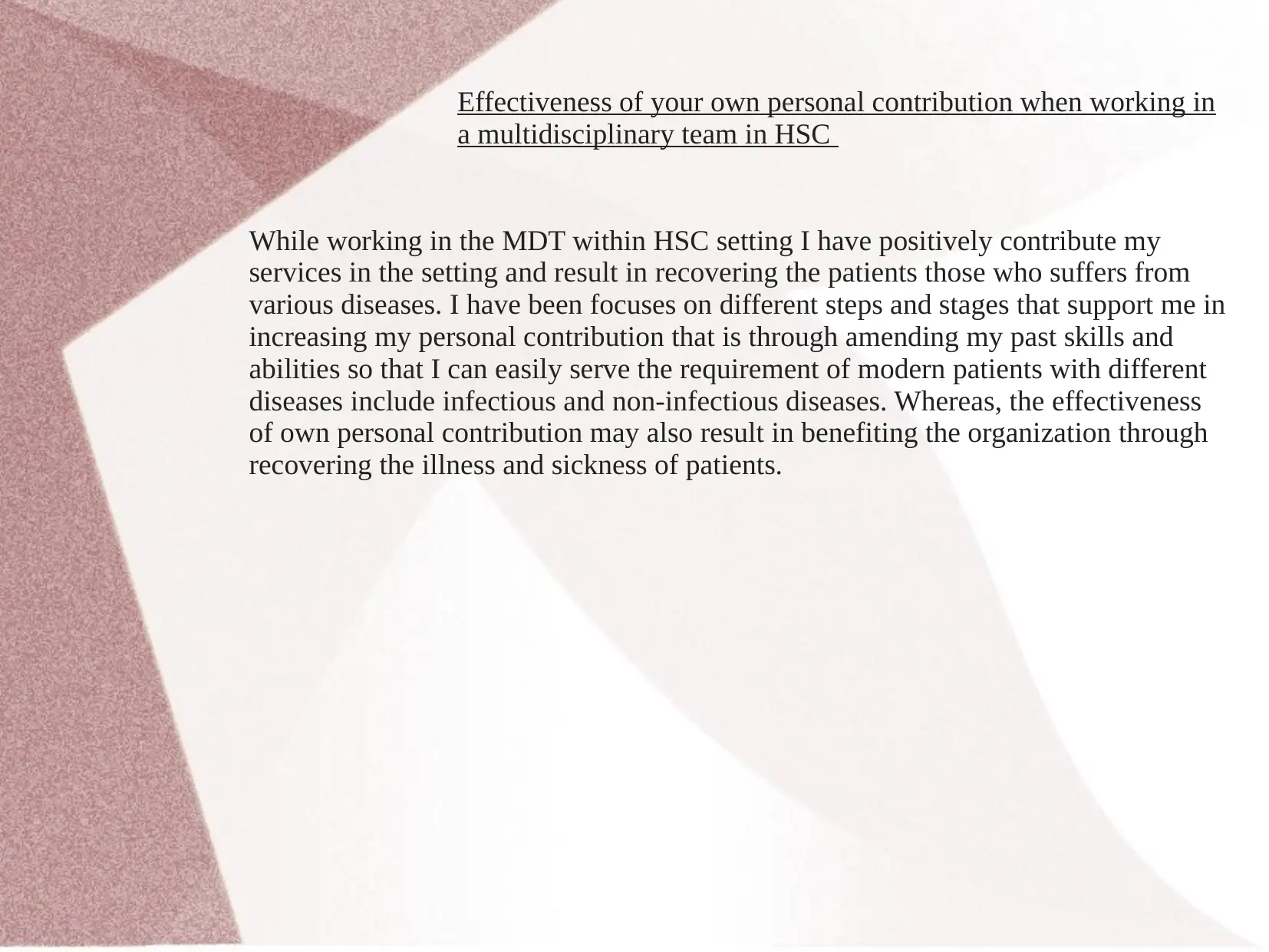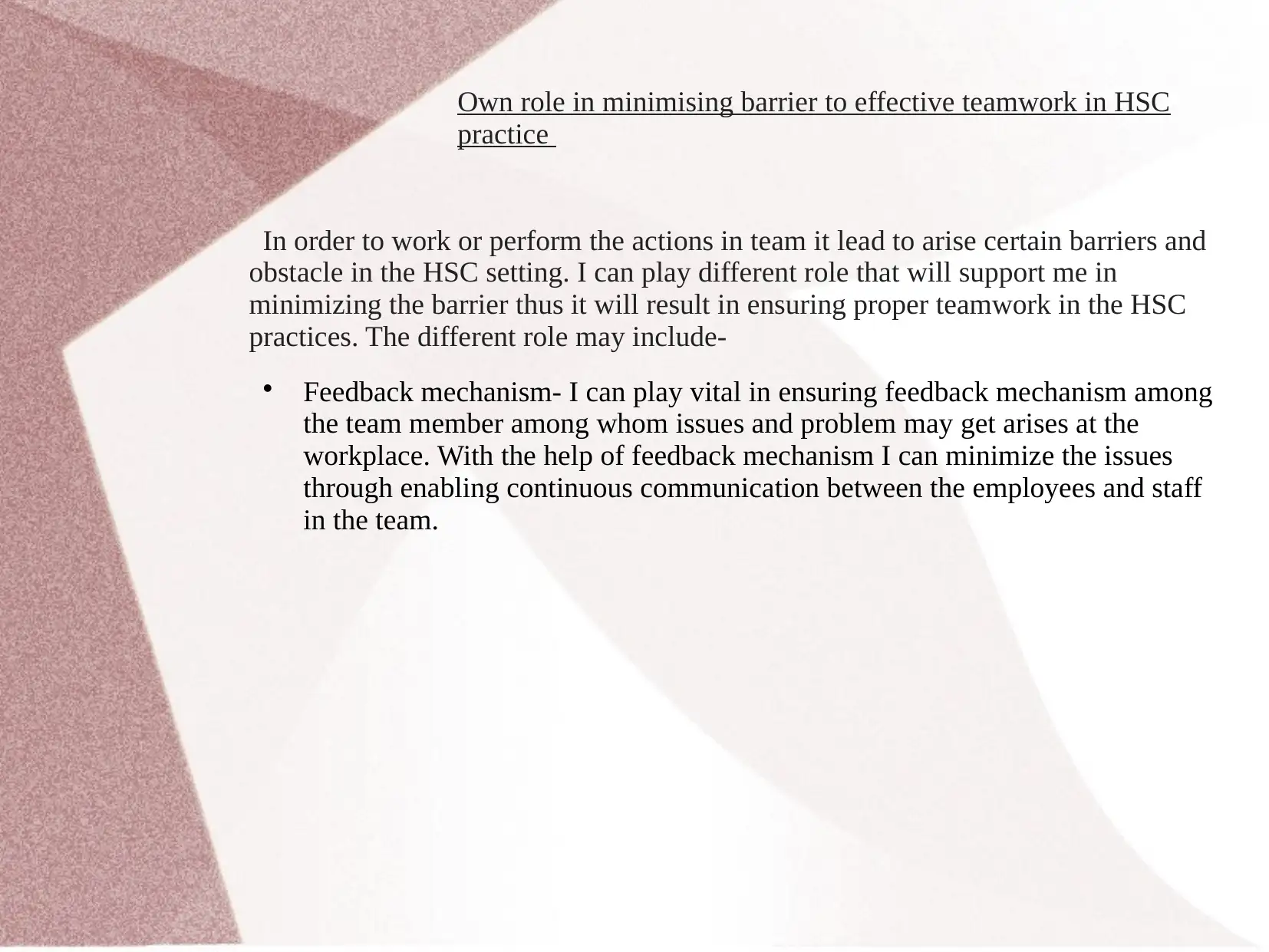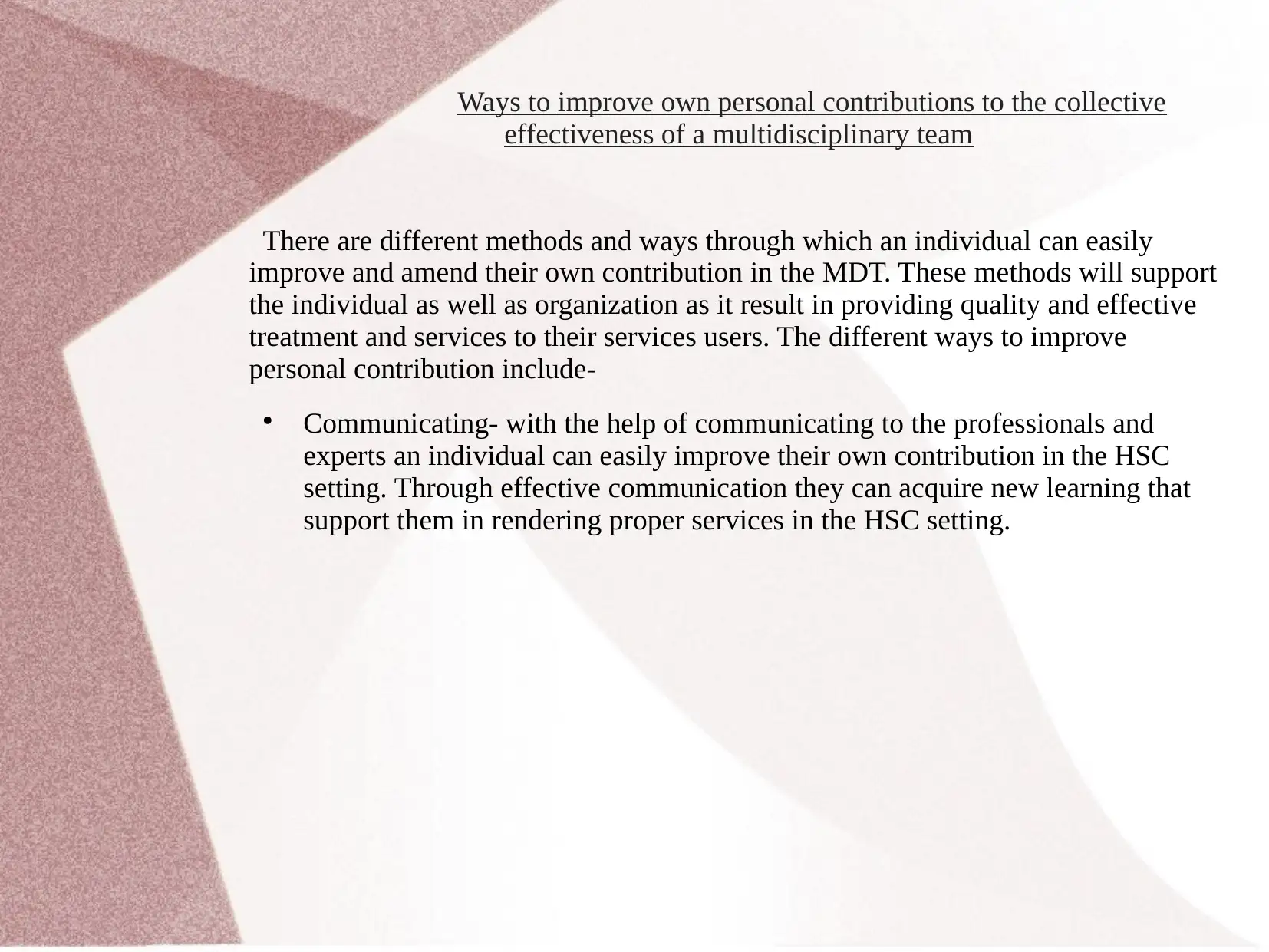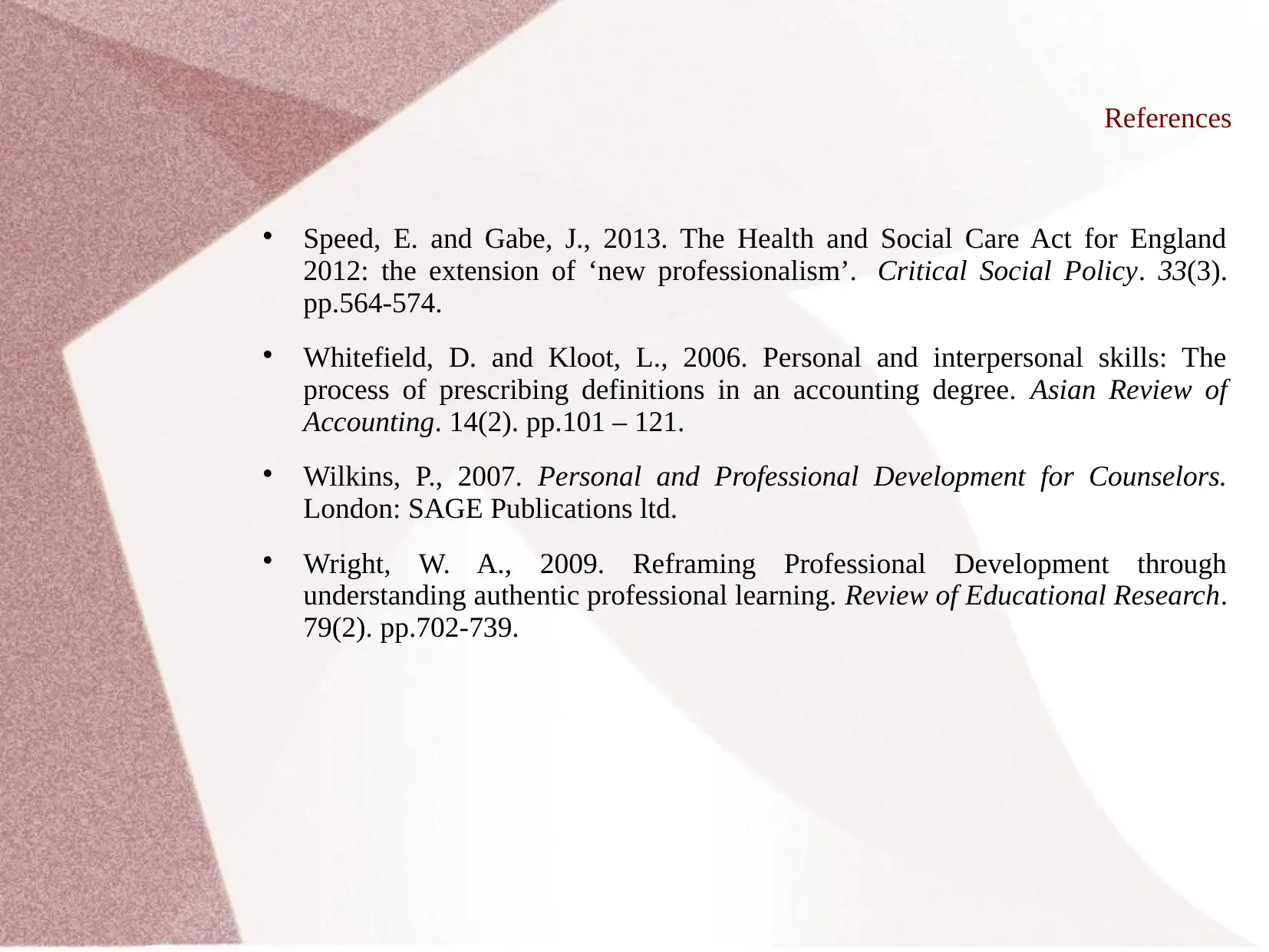Planning & Teamwork: Health Promotion Campaign in HSC Setting
VerifiedAdded on 2023/04/22
|6
|485
|213
Report
AI Summary
This report explores the planning of a health promotion campaign within the Health and Social Care (HSC) setting, focusing on the effectiveness of individual contributions within a multidisciplinary team (MDT). It highlights the author's positive contributions to patient recovery and the continuous improvement of skills to meet the evolving needs of patients with various diseases. The report also addresses the minimization of barriers to effective teamwork through feedback mechanisms and improved communication. Furthermore, it outlines methods for enhancing personal contributions to the collective effectiveness of an MDT, such as continuous learning and communication with professionals. The references cited support the discussion on professionalism, personal development, and teamwork within the HSC context. Desklib provides students access to a wide range of study tools and resources, including solved assignments and past papers.
1 out of 6













![[object Object]](/_next/static/media/star-bottom.7253800d.svg)